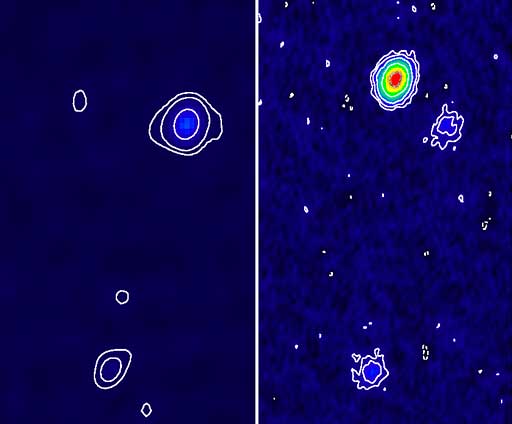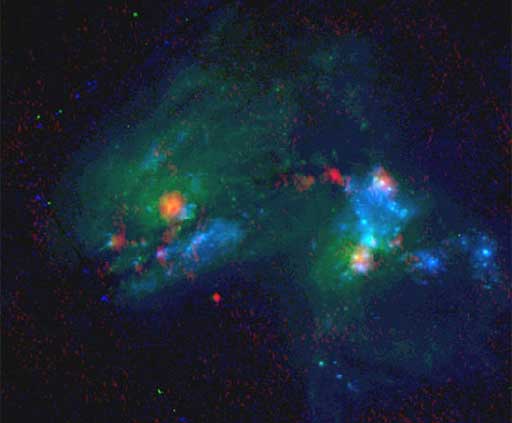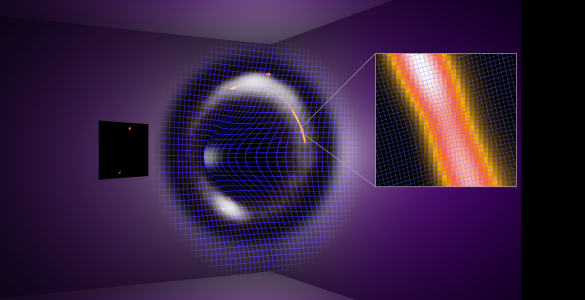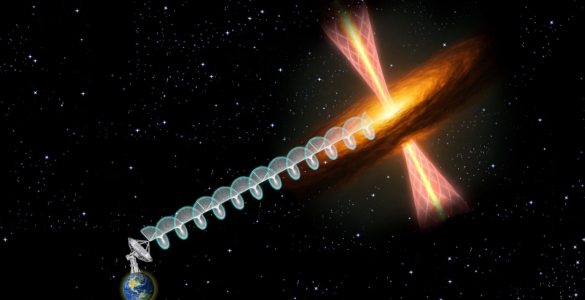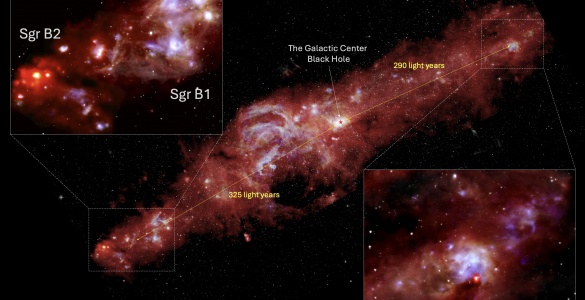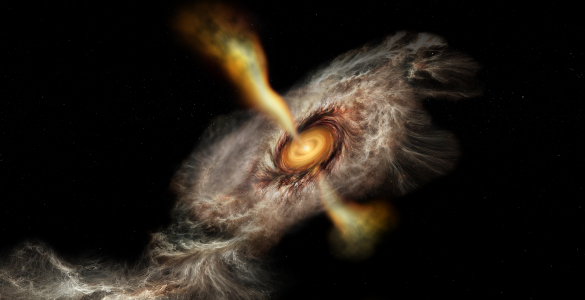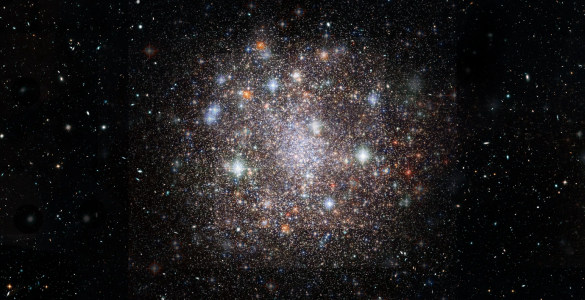Using the National Science Foundation’s Very Long Baseline Array (VLBA) radio telescope, astronomers have discovered a newly-exploded star, or supernova, hidden deep in a dust-enshrouded “supernova factory” in a galaxy some 140 million light-years from Earth.
“This supernova is likely to be part of a group of super star clusters that produce one such stellar explosion every two years,” said James Ulvestad, of the National Radio Astronomy Observatory (NRAO) in Socorro, NM. “We’re extremely excited by the tremendous insights into star formation and the early Universe that we may gain by observing this ‘supernova factory,'” he added.
Ulvestad worked with Susan Neff of NASA’s Goddard Space Flight Center in Greenbelt, MD, and Stacy Teng, a graduate student at the University of Maryland, on the project. The scientists presented their findings to the American Astronomical Society’s meeting in Nashville, TN.
“These super star clusters likely are forming in much the same way that globular clusters formed in the early Universe, and thus provide us with a unique opportunity to learn about how some of the first stars formed billions of years ago,” Neff said.
The cluster is in an object called Arp 299, a pair of colliding galaxies, where regions of vigorous star formation have been found in past observations. Since 1990, four other supernova explosions have been seen optically in Arp 299.
Observations with the NSF’s Very Large Array (VLA) earlier showed a region near the nucleus of one of the colliding galaxies which had all the earmarks of prolific star formation. The astronomers focused on this region, prosaically dubbed “Source A,” with the VLBA and the NSF’s Robert C. Byrd Green Bank Telescope in 2002, and found four objects in this dusty cloud that are likely young supernova remnants. When they observed the region again in February 2003, there was a new, fifth, object located only 7 light-years from one of the previously detected objects.
More observations on April 30-May 1, 2003, showed that this new object has typical characteristics of a supernova explosion by a young, massive star.
“This supernova is exploding in a very dense environment, quite different from the environments of supernova explosions that can be seen in visible light,” Teng said. “This is the kind of dense environment in which stars likely formed in the early Universe,” she added.
The astronomers believe the super star cluster in Arp 299 saw its most recent peak of star formation some 6-8 million years ago, and now its massive stars, 10-20 times (or more) as massive as the Sun, are ending their lives in supernova explosions. Super star clusters typically contain up to a million stars, which is why the scientists think Source A will see frequent supernova explosions.
“We plan to keep watching this region, and hope that we can study numerous supernovae, and gain important new information about the processes of star formation, both in the early Universe and at the present time,” Neff said.
“Because of the dust and the distance, only a radio telescope with the VLBA’s ability to see fine detail can find the supernovae in this region,” Ulvestad said.
The VLBA is a continent-wide system of ten radio- telescope antennas, ranging from Hawaii in the west to the U.S. Virgin Islands in the east, providing the greatest resolving power, or ability to see fine detail, in astronomy. Dedicated in 1993, the VLBA is operated from the NRAO’s Array Operations Center in Socorro, New Mexico.
The VLBA has made landmark contributions to astronomy, including making the most accurate distance measurement ever made of an object beyond the Milky Way Galaxy; the first mapping of the magnetic field of a star other than the Sun; “movies” of motions in powerful cosmic jets and of distant supernova explosions; the first measurement of the propagation speed of gravity; and long-term measurements that have improved the reference frame used to map the Universe and detect tectonic motions of Earth’s continents.
The National Radio Astronomy Observatory is a facility of the National Science Foundation, operated under cooperative agreement by Associated Universities, Inc.
Contacts:
Dave Finley, NRAO Public Information Officer
Socorro, NM
(505) 835-7302
dfinley@nrao.edu
Bill Steigerwald, NASA Goddard Space Flight Center
(301) 286-5017
William.A.Steigerwald@nasa.gov






